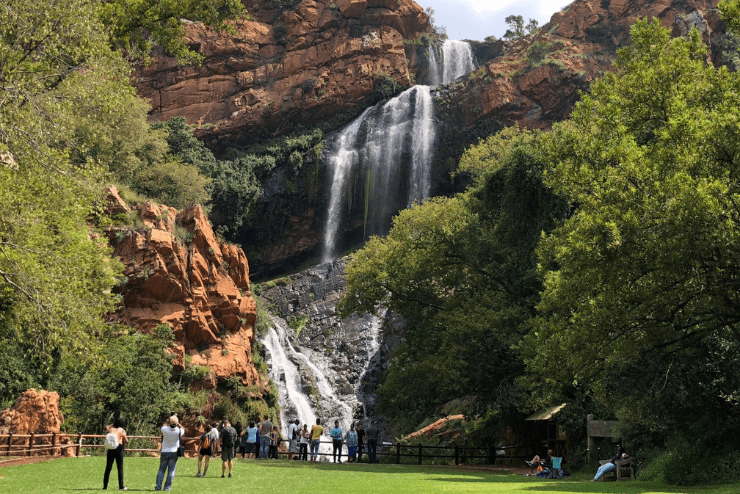The Johannesburg North Attractions PDFs
The Johannesburg North Attractions PDFs
Blog Article
Johannesburg North Attractions - Questions
Table of ContentsA Biased View of Johannesburg North AttractionsJohannesburg North Attractions Things To Know Before You BuyThe 4-Minute Rule for Johannesburg North AttractionsExamine This Report on Johannesburg North AttractionsThe Basic Principles Of Johannesburg North Attractions Johannesburg North Attractions for Beginners
The city expanded on the side of the Witwatersrand Key Coral reef, a below ground stratum of gold-bearing quartz-silica conglomerate that arcs for hundreds of miles below the Highveld - Johannesburg North attractions. Most of the gold mines in the city discontinued procedure in the 1970s, yet in its day the Witwatersrand gold market accounted for more than 40 percent of the world's yearly gold manufacturing.Johannesburg has a temperate climate. Summer temperature levels balance about 75 F (24 C); wintertime temperature levels balance about 55 F (13 C) and just sometimes dip listed below cold. The city delights in concerning eight hours of sunshine per day in both winter and summer. Rainfall averages regarding 28 inches (700 millimetres) per annum, however the complete varies considerably from year to year.
What rainfall the city gets falls almost solely in the summer months, typically in spectacular late-afternoon electric storms., where several citizens still depend on coal for gas.

Our Johannesburg North Attractions Statements
The balance of the city is inhabited by whites. Lodging varies in personality and quality.
Physical development, although rather limited by transportation, proceeded swiftly as immigration to South Africa, and Johannesburg specifically, raised substantially. This issue was resolved in the 1930s when the vehicle was presented in automation to South Africa. Automobiles were, generally, restricted to the affluent, and permitted them to relocate to the north of the city and commute into the centre.
Most bad suburbs were mixed, with bad blacks and whites cohabiting, although the rich residential areas were usually scheduled for whites. This transformed with the election of the National Party in the 1948 political elections, who started to formalise the system called apartheid. Discrimination formally assigned which residential areas each race could reside in under the Team Locations Act.
The previous system of eleven phoned number you can try this out areas was reorganised in 2006. Marshalltown, as seen from the top of the Carlton Centre. The M1 and M2 run behind the structures, and the southern residential areas expand past the highway border. The central city of Johannesburg lies within the city's Area F. The number of people living in the internal city on a casual basis is unknown, as many are illegal immigrants. The joblessness, education, and age profiles of the location are all unidentified, due to the problem of obtaining dependable information about the location.
The smart Trick of Johannesburg North Attractions That Nobody is Talking About
Yeoville and Bellevue have a mix of apartment or condo structures and solitary visite site residential units on small great deals. The area is situated on a hilly divide that runs from eastern to west.

Johannesburg Stadium, a training ground for both the Golden Lions and Orlando Pirates, is adjacent. The eastern suburbs of Johannesburg are situated in the city's 7th [] and 9th [] regions. The location is also functionally incorporated with East Rand border communities outside of the main limit of Johannesburg, such Recommended Site as Bedfordview and Edenvale (both part of Ekurhuleni Metropolitan Community).
Not known Incorrect Statements About Johannesburg North Attractions
The eastern suburbs are some of the earliest areas of Johannesburg, there are big areas of Jewish and various other European backgrounds, the bulk of the population is English speaking. There are three golf training courses as well as a number of protected ridges with viewsites.
The location is mostly composed of old "matchbox" homes, or four-room houses developed by the government, that were developed to supply economical accommodation for black employees during discrimination. Soweto is an acronym, representing "South Western Townships". Street after road around is lined with matchboxes; nonetheless, there are a couple of smaller locations where flourishing Sowetans have actually developed houses that are more similar in stature with those in more wealthy residential areas.
Hostels are one more prominent physical function of Soweto. Initially built to house male migrant workers, many have been improved as residences for couples and households. The N1 Western Bypass skirts the eastern border of Soweto. The suburb was not traditionally allowed to create employment centres within the location, so mostly all of its homeowners are travelers to various other parts of the city.
Getting My Johannesburg North Attractions To Work
The household areas in the north residential areas are mainly official, with no significant areas of informal real estate, or housing that does not have a long-term structure. This is an established area, there is a trend of land use change from household to business, particularly along main arterial roads and around established nodes.
The area is well connected to road networks, specifically along the north-south axis created by the M1 and N1. Roads to the east and west are much less well established, as there are no highways travelling because direction. Towards the north border of the city, the density of advancement reduces, leaving large locations of primitive land around Midrand.
How Johannesburg North Attractions can Save You Time, Stress, and Money.
, which is located on a hill overlooking the internal city and Hillbrow.
Report this page